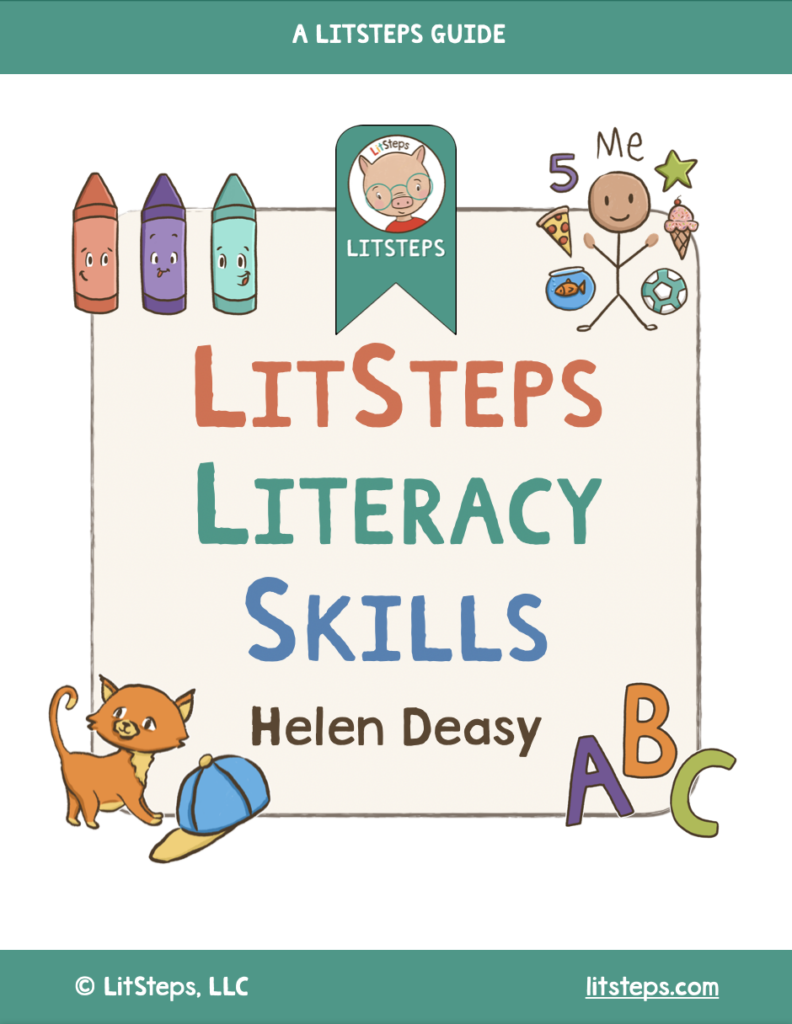
Teach
Skills Intro
Milestones
It isn't always obvious, but your child continuously learns new things. Even when they appear stuck in place, they are interpreting the world around them. You begin to worry that they're not progressing as they should. Or worse, that it's your fault because you aren't doing enough to help them. Then suddenly, just like that, they piece all the little things they've been learning together and are on to the next thing.
Slow and Steady
Your child needs to take small literacy steps and climb steep literacy hills before they scale literacy mountains. They need to train daily, building their literacy muscles little by little. You are their trainer and guide; keeping pace and cheering them on.
How can you be the best guide? Take your expectations out of the equation. Let them move at their own pace. If they stop for a breather, give them some water. If they overdo it, hand them a towel. If they need to rest, sit with them. And if they need to turn back, carry them home. Always encourage. Never push.
Introducing Skills
I Do, We Do, You Do
Many parents wonder how they'll know when their child has mastered a skill so they can move on to something new. The best way is by paying attention to your child's level of autonomy when using the skill. Can they "use" the skill independently, or do they wait for your help?
Use I Do, We Do, You Do to help you decide if it's time to move on:
- In the "I Do" stage you model the skill for them.
- In the "We Do" stage you and your child work together to perform the skill.
- In the "You Do" stage, your child models the skill for you.
Link
When introducing your child to a new skill, link it to something they already know. For example, if you want them to learn what red is, use their red fire truck as an introduction. Play a searching game. Search the house for red items. Once they've mastered finding red items at home, expand the search. Look for red in your neighborhood. Then look for red in books you read together. Connecting new skills to the world they live in will make their learning more meaningful.
Short & Sweet, then Repeat
Teachers of young children should adopt this as their mantra. Short and sweet, then repeat. Short attention spans call for short lessons. Fun, low-stake lessons are the ones your child will tune in to. Introduce something new. Keep it light. Move on quickly. Repeat the process the following day.
Pause
Taking time out from teaching is an excellent strategy for long-term engagement. We adults are task-oriented. We're mentally checking things off our to-do list from the moment we get out of bed in the morning until our heads hit the pillow each night. And while spending time with your child is a good thing to have on your daily to-do, using that time to check off skills lessons may not be the best approach. A healthy balance of fun and productivity is essential to keeping your child happy and engaged. We all like a bit of praise now and then; recognition for our accomplishments. Not every book you read with your child needs to have a lesson attached. Tuck that checklist in a drawer for a few days and go where the wind takes you. Celebrate the bond you are creating with your child.
Model
Sometimes the best thing to do is give your child room to explore. What if you read your book while they read theirs? Or you sit down to paint alongside them instead of hovering over them. Your child is watching everything you do. And they're modeling themselves after you. Be the example you want them to see.
Question
When we're young, our curiosity is more powerful than our fear of not having the answers. But what if we show our children that asking questions and seeking answers leads to a happier more fulfilling life? Leave room for curiosity and wonder. Tell them we don't need to have all the answers. Our lives are spent searching and wondering and learning. Sometimes we seek people who know things we don't and we learn from them. Sometimes, we're the teachers. You are your child's teacher. But you are also their student. Next time they say or do something unexpected, remember to question them. Why do they think that? How did they figure that out? Where did they learn that? Can they teach you how to do that? Questioning is how we understand one another and make connections to the world. Your child will ask questions you don't have answers to. Explore the answers together.




